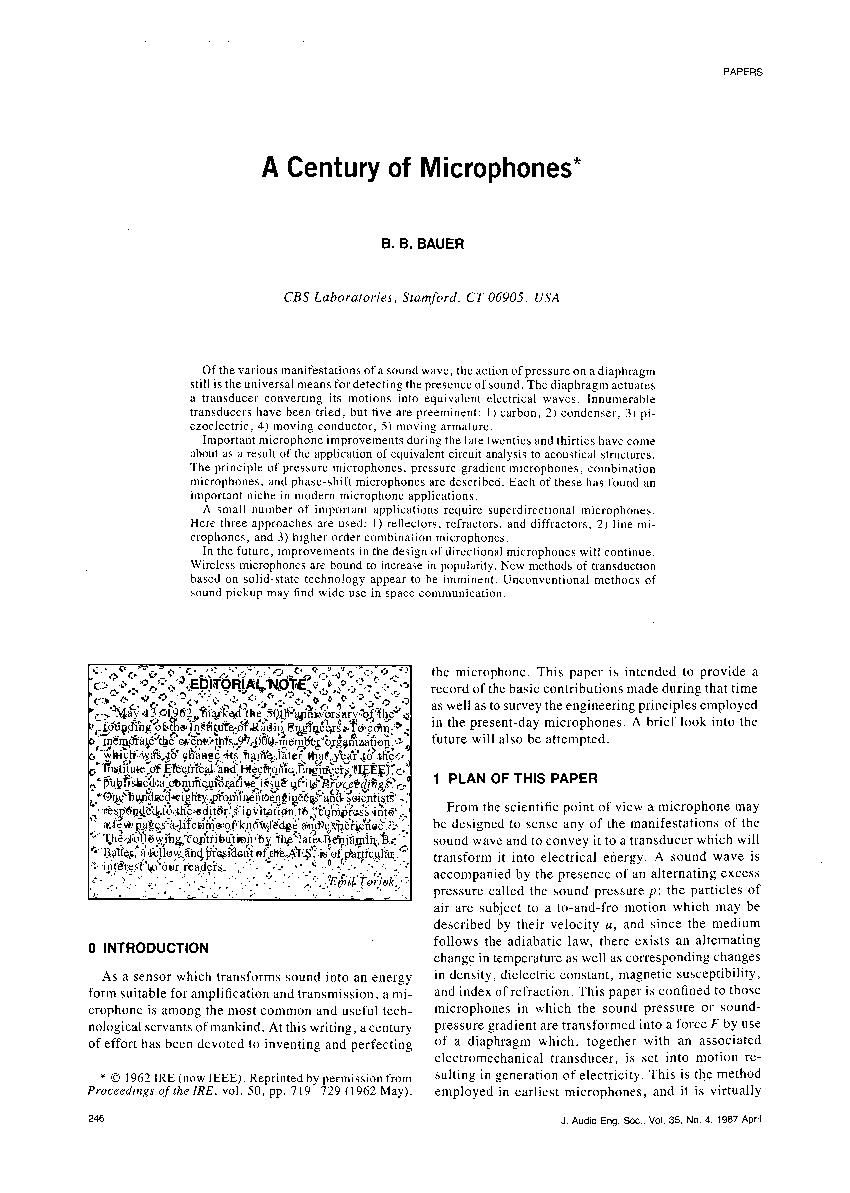Home / Publications / E-library page
You are currently logged in as an
Institutional Subscriber.
If you would like to logout,
please click on the button below.
Home / Publications / E-library page
Only AES members and Institutional Journal Subscribers can download
Of the various manifestations of a sound wave, the action of pressure on a diaphragm still is the universal means for detecting the presence of sound. The diaphragm actuates a transducer converting its motions into equivalent electrical waves. Innumerable transducers have been tried, but five are preeminent: 1) carbon, 2) condenser, 3) piezoelectric, 4) moving conductor, 5) moving armature.: Important microphone improvements during the late twenties and thirties have come about as a result of the application of equivalent circuit analysis to acoustical structures. The principle of pressure microphones, pressure-gradient microphones, combination microphones, and phase-shift microphones are described. Each of these has found an important niche in modern microphone applications.: A small number of important applications require superdirectional microphones. Here three approaches are used: 1) reflectors, refractors, and diffractors, 2) line microphones, and 3) higher order combination microphones.: In the future, improvements in the design of directional microphones will continue. Wireless microphones are bound to increase in popularity. New methods of transduction based on solid-state technology appear to be imminent. Unconventional methods of sound pickup may find wide use in space communications.
Author (s): Bauer, Benjamin B.
Affiliation:
CBS Laboratories, Stamford, CT
(See document for exact affiliation information.)
Publication Date:
1987-04-06
Import into BibTeX
Permalink: https://aes2.org/publications/elibrary-page/?id=5212
(1443KB)
Click to purchase paper as a non-member or login as an AES member. If your company or school subscribes to the E-Library then switch to the institutional version. If you are not an AES member Join the AES. If you need to check your member status, login to the Member Portal.

Bauer, Benjamin B.; 1987; A Century of Microphones [PDF]; CBS Laboratories, Stamford, CT; Paper ; Available from: https://aes2.org/publications/elibrary-page/?id=5212
Bauer, Benjamin B.; A Century of Microphones [PDF]; CBS Laboratories, Stamford, CT; Paper ; 1987 Available: https://aes2.org/publications/elibrary-page/?id=5212